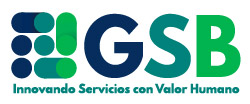The retrospective, or retro, is a periodic meeting that the team holds to explicitly reflect on its work and make decisions for improvement.
It is a point of inspection and adaptation of our processes and work team.
It uses an established format that invites team members, both individually and jointly, to specify what has worked well, what problems arose, and what are the improvement actions that will solve the problems encountered, improve the way of working and achieve the proposed objective.
They usually have a duration of 1 hour for periods of 2 weeks.
Powerful retros must:
- Provide a trusting environment where each participant feels comfortable expressing his or her opinions and points of view.
- Include a dynamic that facilitates participation and an environment conducive to retro.
- Reveal facts that have measurable effects on the team’s performance, avoiding subjective and general lamentations and drama.
- Generate actions that can form a backlog of improvement tasks.
- Prioritize the backlog of improvements and plan the tasks that the team can perform together with its backlog of requests.
- A moderator a) Explain the dynamics, b) Establish meeting agreements, for example, ask for the floor, listen to others when they speak, mute the microphone, turn on the camera, do not answer the cell phone during the meeting, etc.) c) Follow up on the actions of the previous retro, d) Control the timebox of each topic, e) Motivate participation, among others.
Powerful retros are performed in 5 steps:
- Set the stage by asking questions or choosing dynamics aimed at encouraging people to participate.
- Gather information about the last period: what was done well and helped to achieve the objectives, and what was done poorly or created impediments.
- Generate ideas about what to avoid, what risks to take and what new goals to set.
- Decide what to do by defining actions the team can take to correct, improve, achieve objectives or mitigate risks.
- To close the retro by getting the team to leave motivated and encouraged to face the next period.
Powerful retros use dynamics that help the moderator and the team to carry out the retro, in the portal All About Retrospectives. The Retromat-BlogIn addition, a set of tips, resources and dynamics, including remote retrospectives, are included.
María Esther Remedios
@soy.agile.coach




